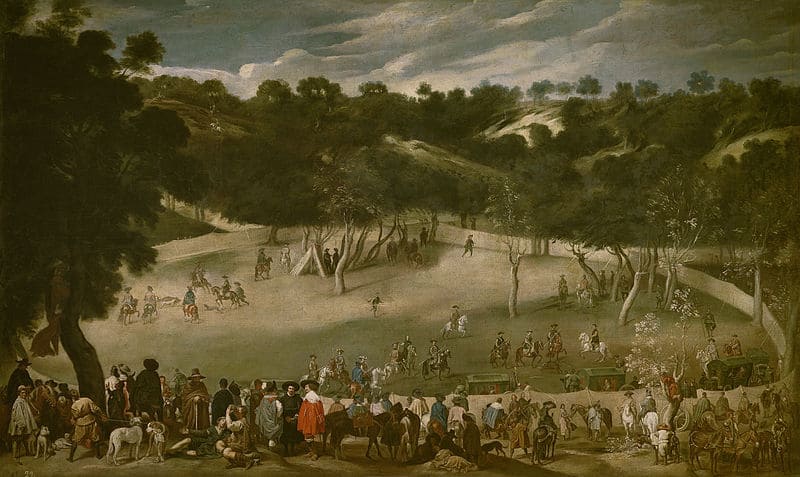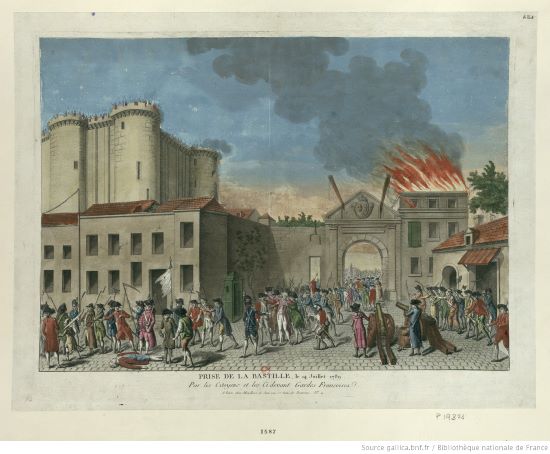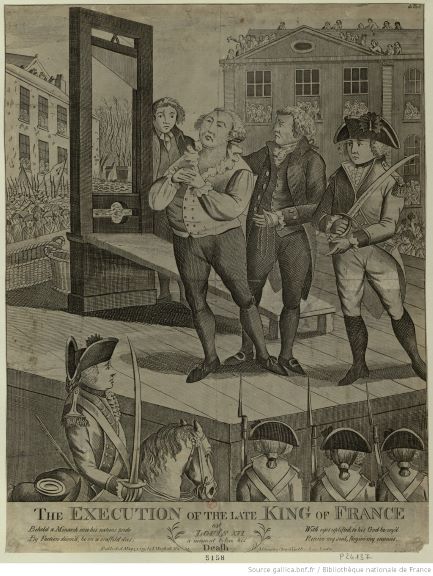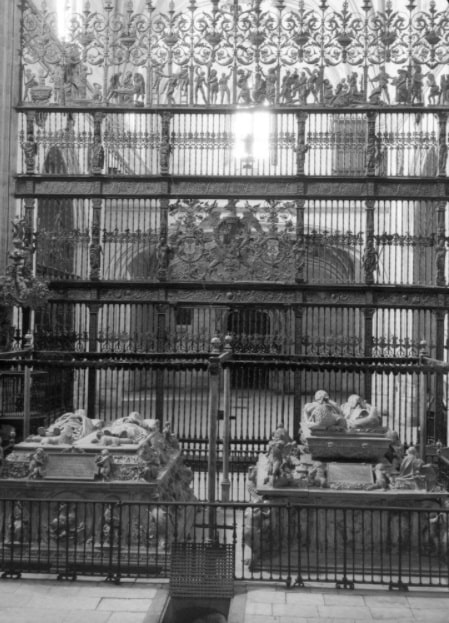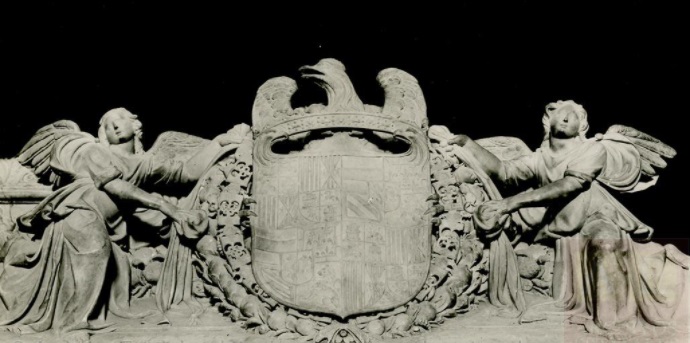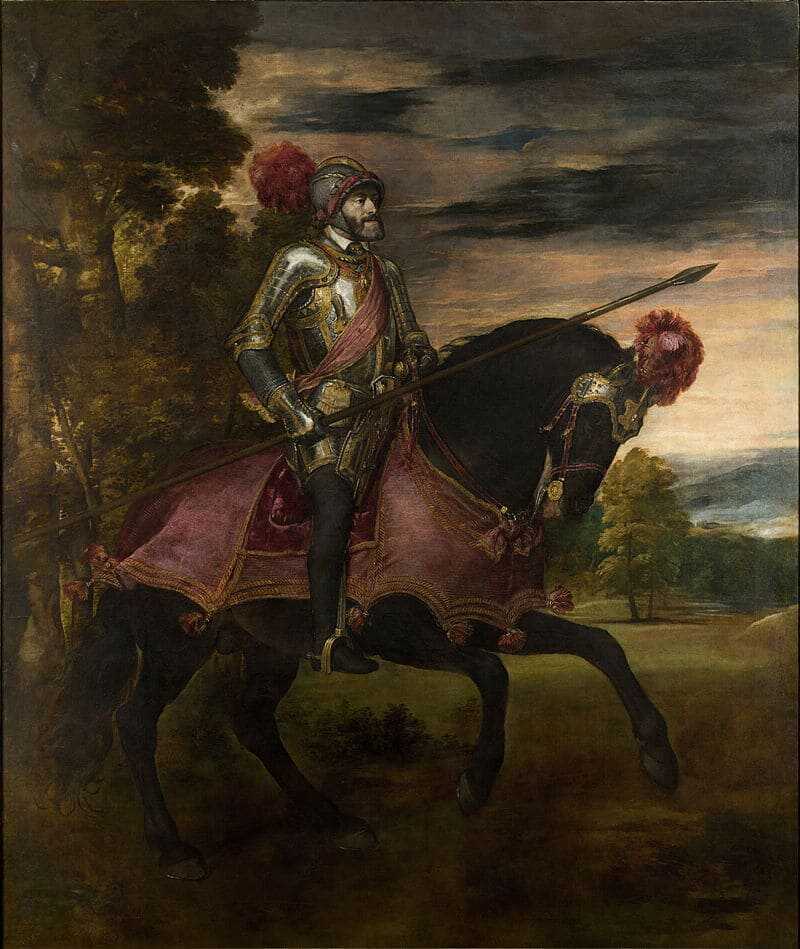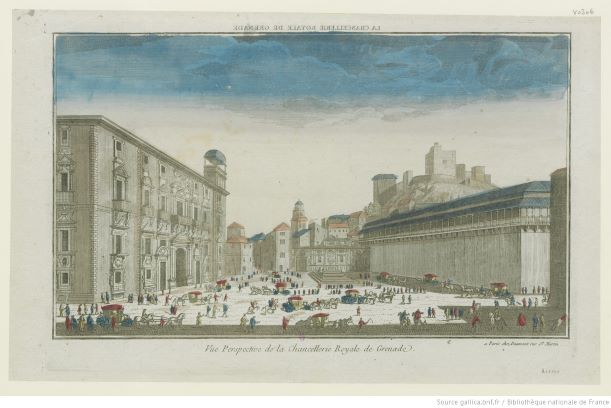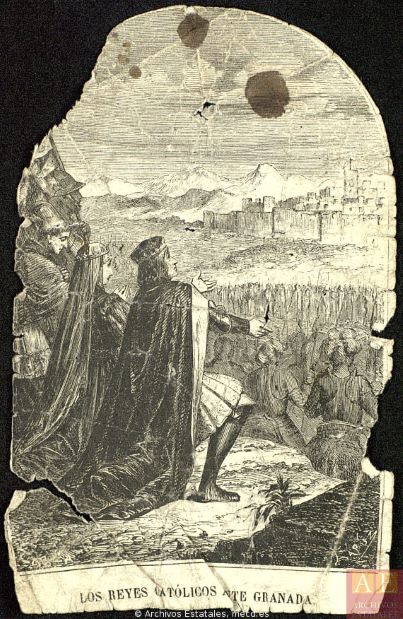A recreational hunting scene at the Court, immortalised by Velázquez’s brush
5. Power and powers in the history of Europe: oligarchies, political participation and democracy.
The image shows the storming of the Bastille, which took place in Paris on 14 July 1789. Its fall at the hands of the Parisian revolutionaries symbolically marked the fall of the Ancien Régime and the beginning of the French Revolution.
The image shows the moments before the execution of the last king of France, Louis XVI. The king can be seen in the centre of the image with the guillotine behind him and a pleading gesture.
Sepulchre of the Catholic Monarchs in the Royal Chapel of Granada, by the sculptor Domenico Fancelli, where they are buried together with the remains of Juana and Felipe
Sepulchre in the Royal Chapel of Granada, by the sculptor Bartolomé Ordóñez, in which Philip I and, later, in the mid-16th century, Joanna I of Castile were buried, together with their parents (the Catholic Monarchs).
The Catholic Monarchs receive the Christian captives after the capture of Malaga, coinciding with one of the final chapters of the peninsular conquest. Painting by Eduardo Cano de la Peña in 1867. Seville Museum of Fine Arts.
Portrait of Charles V by Titian in 1548. Museo Nacional del Prado.
Participation of socio-professional groups in Navarre’s institutions in the 18th century
The image shows a view of the Royal Chancery of Granada around 1770. In the upper right-hand corner, part of the Alhambra can also be seen
The image shows the Catholic Monarchs, Isabella and Ferdinand, kneeling in front of the city of Granada. To the left of the image and in front of the Catholic Monarchs, the Christian troops can be seen. In front of them, on the right, the city walls can be seen, with the Alhambra in the background, as well as the Muslim troops. It is very likely that the image represents the Muslim surrender and the handing over of the keys of the city by Boabdil to the Catholic Monarchs


